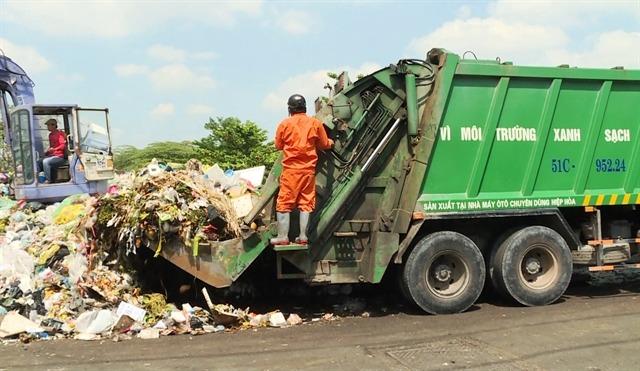Hanoi to turn most waste into energy in 2021
Waste-to-energy technology is a feasible solution for the solid waste problem in Vietnam's major cities, especially Hanoi and Ho Chi Minh City.
By the first quarter of 2021, Hanoi city's waste will be mainly treated with waste-to-energy technology, the Government Portal quoted Chairman of the municipal People's Committee Nguyen Duc Chung as saying.
Chung said that so far three investors have been authorized to invest in waste treatment. Besides, the construction of waste-to-energy treatment plant in Soc Son district has been 30% completed and the facility is expected to undergo trial run by the end of August and be fully operational in October 2020, Chung informed.
| An environment worker sorts through used plastic bottles at a junkyard in Hanoi. Photo: Internet |
Waste-to-energy technology is a feasible solution for the solid waste problem in Vietnam's major cities, especially Hanoi and Ho Chi Minh City, Luu Duc Cuong, director general of the Vietnam Institute for Urban and Rural Planning told local media. The application of the technology can reduce the volume of waste buried in landfills, Cuong said.
He added that landfills have become unsustainable as they lead to leakage of hazardous elements and wastewater into the environment.
Besides, incineration should not be contemplated as a waste solution as it requires substantial use of energy such as fuel and coal, and emits significant pollutants when unsorted mass waste are burned.
Mass incineration limits the possibilities of beneficially reusing and recycling waste. Over the long-term, it is not a sustainable solution as well as environmentally and economically impractical, the experts explained.
Hanoi will build the Nam Thang Long – Tran Hung Dao urban railway with ODA
Besides the issue of waste treatment, the Hanoi mayor said the city’s government will make effort to complete a smart traffic operation center by June 2020 to provide its residents with information about daily traffic.
The Hanoi People's Council on December 4 approved the use of ODA and concessional loans from foreign sources to build the urban railway No.2, section of Nam Thang Long – Tran Hung Dao.
This is an important project in the urban railway network in Hanoi’s transport planning until 2030, with a vision to 2050, contributing to connecting urban areas and reducing congestion in the city. The project has been included in the city’s list of key works in the 2016-2020 period.
The total investment of the project is expected to amount to VND35,679 billion (US$1.53 billion). However, the local government said the city's debt will stay within safe limits.












